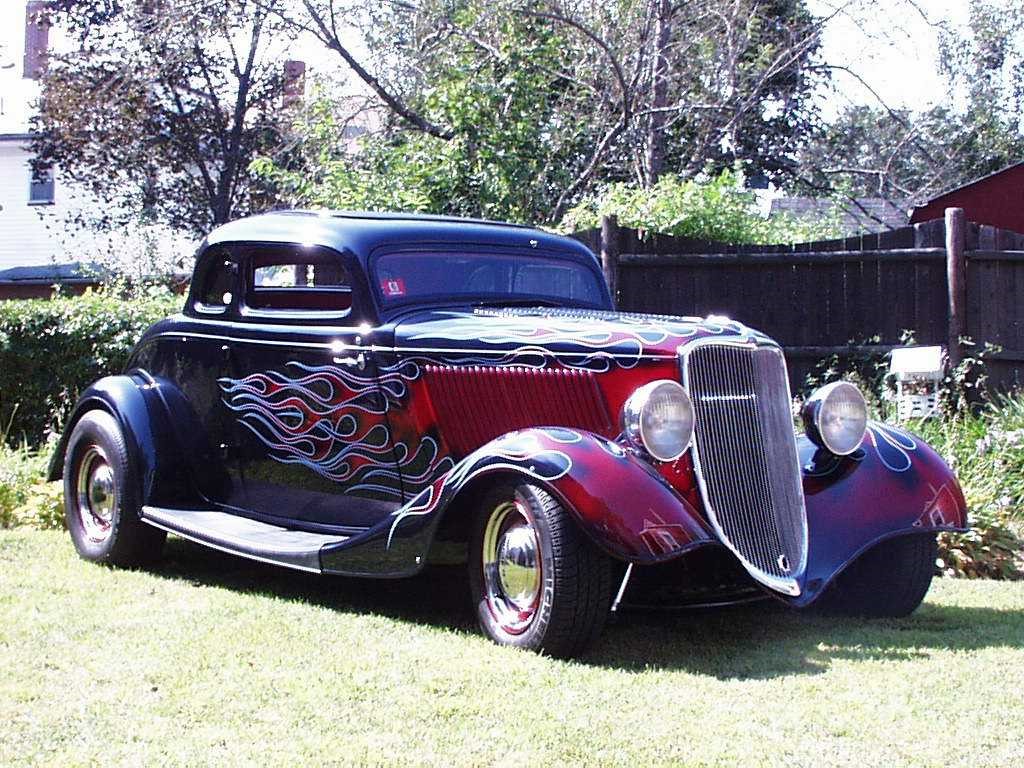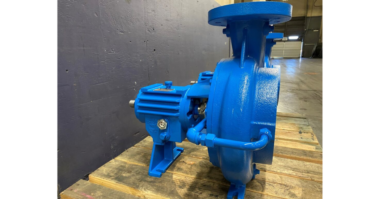Author: Henri Azibert
The practice of ‘hot rodding’ consists of taking an older piece of machinery and modifying it to increase its performance. Hot rodding is quite common with cars, but is definitely applicable to any kind of machine, including pumps. So how do you ‘hot rod’ your pump?
We will be conducting a “frame off” restoration, so everything will need to come apart. Before we start making improvements, we must first make sure the frame is solid. Base plate, supports, piping – all must be cleaned. Any corrosion must be removed and repaired. Scraping, grinding, sand blasting, it is very tedious, but essential. To increase the strength of the frame, the base plate must be grouted to the foundation. Flexing of the frame under load creates stresses on all the components, so it must be eliminated as much as possible.
Unfortunately, over time, corrosion has taken its toll. It is time to do some body repair. After going back to bare metal, welding is used to fill in the missing metal; a brace is added here and there to reduce flex that had been a problem in the past. Grinding is done to smooth out and remove any irregularity. All the openings are matched for a smooth flow. Internal porting is carefully and tirelessly completed. And now for the final touch that will give that incredibly smooth and flawless finish…we will be applying an epoxy coating. Not only will it look great, but fluids will glide right over effortlessly.
Time for a new set of wheels. The old impellers, with all those cavitation marks have to be replaced. A new, more efficient design will be used. The diameter is adjusted to the latest requirements. Of course, the most accurate dynamic balancing is used to eliminate the possibility of any vibration. It looks so much better with the correct proportions tucked inside the volute with just the right amount of clearance!
That old motor has served well, but it definitely is getting tired. Time to consider a brand-new crate motor, with all the new technology, higher power, increased efficiency and improved cooling. It will handle all the high loads without a whimper, and still have plenty of reserve, just in case.
Then we need to move on to electronic ignition. No more of that predetermined timing delivery. It is the right time to have the ability to exactly match the advance curve with the load. So, a brand-new variable frequency drive is added. No matter what the conditions are, no matter how much temperature, load, flow or pressure conditions change, adjustments are made to match the need.
The best hydraulic shock absorbers will be added. New expansion joints are used to separate the pump and piping from undue stress, vibration, or resonance. No need to transmit any irregularity encountered along the process.
That old injection needs an upgrade. The single seal Plan 32 (bringing external liquid into the seal area) was reliable, but quite energy inefficient. All that liquid that needed to be heated up or eliminated somewhere along the way resulted in excessive power consumption. So, we are changing to a modern system that is self-contained. A Plan 53, dual pressurized seals, with a heat exchanger reservoir will keep everything isolated, cool, clean and lubricated. A bit more expensive to set up and troubleshoot, but it will be more than worth it with the increased fuel efficiency and reliability.
A precision laser alignment will be done. The power delivery will be incredibly smooth, now that all the drive train is properly lined up.
One final touch: going to synthetic lubricants. They will resist oxidation at the higher temperatures encountered during the high loads. The viscosity will be a lot more consistent over the wide temperature range. This will complement the new high-performance bearings with ceramic rolling elements that will prevent errant current to go to the ground.
Time is taken for final assembly. Every bolt is tightened with a torque wrench. Every subsystem is tested.
A trial run verifies that all is operating properly. A few tweaks are done to get everything to run as smoothly as possible. More flow, smoother running, more fuel efficient, it will go further and faster than when new. There is no reason for it not to last forever.
Before the release to production, one final decision is required. Will the final paint include flames, or a more discreet, but just as cool pin striping?





Comments